Youth Action
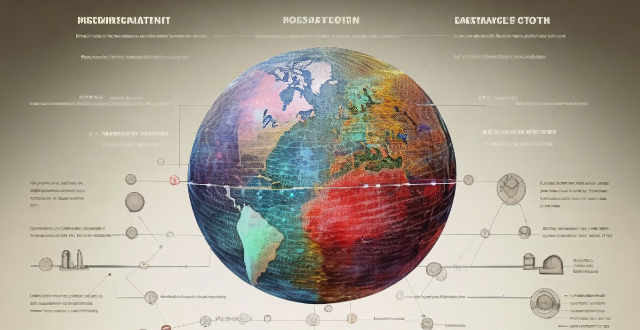
What are some successful examples of youth-led climate action initiatives ?
This article discusses successful youth-led climate action initiatives around the globe, highlighting examples like Fridays for Future, US Youth Climate Strike, and Earth Uprising. These movements have achieved significant milestones in raising awareness, inspiring policy changes, and fostering collective action towards addressing climate change.

How effective are youth-led climate action campaigns ?
Youth-led climate action campaigns are effective in mobilizing young people, employing creative strategies, attracting media attention, influencing policymakers, and focusing on education and awareness.
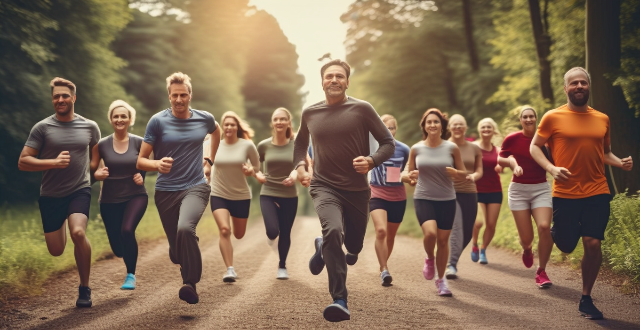
What is the role of youth activism in pushing for more robust global climate governance ?
The role of youth activism in pushing for more robust global climate governance is significant. Young people are acutely aware of the urgency of the climate crisis and bring a long-term perspective to the issue, recognizing that the choices made now will have far-reaching consequences for generations to come. They are often more open to new ideas and ways of thinking than older generations and are willing to embrace innovative solutions to complex problems. Youth activists are raising awareness about the severity of the climate crisis, influencing policy at all levels of government, and building international coalitions around climate action. Their efforts have led to significant progress in areas such as renewable energy, carbon pricing, and emissions reduction targets. As we face the challenges of the climate crisis, the voice and energy of youth activists will continue to be critical in shaping our response.

How can young people get involved in climate action ?
Young people can get involved in climate action by educating themselves, joining youth organizations, advocating for change, taking local action, volunteering, and supporting sustainable businesses.

What initiatives are being taken globally to include children in climate action planning ?
Including children in climate action planning is crucial for several reasons. Firstly, it acknowledges their rights and provides them with a platform to voice their concerns about the environment. Secondly, it encourages intergenerational dialogue and collaboration, which can lead to more effective solutions. Finally, involving children in climate action planning helps them develop critical thinking skills, empathy, and a sense of responsibility towards the planet. Here are some initiatives that are being taken globally to include children in climate action planning: 1. UNICEF's Child-Friendly Cities Initiative 2. The Global Kids Climate Forum 3. The Youth4Climate Movement 4. The Fridays for Future Movement 5. The Climate Change Education Programme (CCEP) 6. The Earth Guardians Programme 7. The Eco-Schools Programme 8. The Children's Climate Prize 9. The Global Youth Biodiversity Network (GYBN) 10. The Youth Environmental Leadership Programme (YELP)

What role do schools play in encouraging youth participation in climate action ?
Schools are vital for encouraging youth participation in climate action through education, extracurricular activities, infrastructure and practices, and community outreach. They can integrate climate change into the curriculum, organize special events, establish eco-clubs, engage in service learning projects, adopt green building design, implement sustainable policies, collaborate with parents and local businesses, form partnerships with universities or research institutions, network with other schools, organize public speaking events, participate in global movements like strikes for climate or Earth Day observances, and use social media to spread information about climate change.

How can the media be used to increase participation in youth sports programs ?
The media can be used to increase participation in youth sports programs by creating awareness, generating interest, and providing information about opportunities available. Strategies include collaborating with local TV and radio stations for PSAs, utilizing social media platforms for short videos and infographics, live streaming sporting events, conducting interviews with coaches and athletes, creating online directories of sports programs, and hosting Q&A sessions and webinars. By leveraging the power of the media, we can inspire more young people to engage in sports and enjoy its numerous benefits.

What are the long-term effects of youth sports on mental health ?
Youth sports can have both positive and negative effects on mental health, including increased self-esteem, improved social skills, and reduced stress levels. However, pressure to perform, overtraining, injuries, bullying, and dependence on sports for identity can also have negative impacts. It is important for adults involved in youth sports to be aware of these potential effects and take steps to foster the positive ones while mitigating any negative impacts.

How can we create more opportunities for youth to participate in sports in rural areas ?
Participating in sports is crucial for a child's development, but rural youth often face challenges in accessing sports facilities and programs. To create more opportunities for youth to participate in sports in rural areas, local governments and organizations can build infrastructure, provide equipment and facilities, train coaches and volunteers, organize competitions and tournaments, and promote sports education. By addressing these issues, we can encourage more children to engage in physical activities, develop their skills, and lead healthy lifestyles.

How has climate action evolved over the past decade, and what progress has been made ?
Over the past decade, significant strides have been made in the realm of climate action. This evolution is characterized by increased awareness, global mobilization, technological advancements, and policy changes aimed at mitigating the effects of climate change. Key aspects of this progress include: 1. **Increased Awareness and Global Mobilization**: Public awareness about climate change has grown substantially, thanks to educational initiatives, media campaigns, youth-led movements like Fridays for Future, and UNFCCC COP conferences. 2. **Technological Advancements**: Remarkable progress in renewable energy technologies, electric vehicles, energy efficiency, and carbon capture has been made. 3. **Policy Changes and Legal Frameworks**: Many countries have implemented policies to reduce greenhouse gas emissions and promote clean energy. The Paris Agreement set a global framework for combating climate change. 4. **Financial Investments and Market Mechanisms**: Green finance, carbon pricing, and investment in sustainable infrastructure are on the rise. 5. **Corporate Responsibility and Innovation**: Corporations are setting sustainability goals, managing their supply chains more sustainably, and consumers are choosing environmentally responsible products. 6. **Civil Society and Community Action**: Grassroots organizations lead community-based actions, local communities establish renewable projects, and NGOs advocate for stronger climate policies. 7. **Research and Collaboration**: Ongoing scientific research, international platforms, and open data initiatives foster collaboration and better understanding of climate solutions. 8. **Challenges and Setbacks**: Despite advancements, challenges remain, including political will, economic barriers, inequity, and loss and damage from climate change. In conclusion, while notable progress has been made in climate action over the past decade, continued efforts across all sectors will be required to meet ambitious goals and limit climate change impacts.

How can young people get involved in climate action advocacy ?
Young people play a crucial role in advocating for climate action by educating themselves and others, joining youth climate movements, attending climate strikes and protests, using social media to spread the message, and volunteering with environmental organizations.

What are the benefits of youth participation in climate change initiatives ?
Youth participation in climate change initiatives is crucial for several reasons. Here are some of the benefits: ### 1\. **Education and Awareness** - **Increased Knowledge:** Young people who participate in climate change initiatives gain a deeper understanding of the science behind climate change, its causes, and potential solutions. This knowledge can be used to make informed decisions about their own lives and advocate for change in their communities. - **Awareness of Environmental Issues:** Through participation, youth become more aware of environmental issues such as deforestation, pollution, and biodiversity loss. This awareness can lead to lifestyle changes that reduce their carbon footprint and inspire others to do the same. ### 2\. **Skill Development** - **Leadership Skills:** Participating in climate change initiatives often involves working with teams, planning events, and advocating for change. These experiences help young people develop leadership skills that will be valuable throughout their lives. - **Communication Skills:** Climate change initiatives require effective communication to raise awareness, share information, and persuade others to take action. Participating in these initiatives helps young people develop strong communication skills that will benefit them in all areas of life. ### 3\. **Policy Influence** - **Voices Heard:** Young people represent a significant portion of the population and have unique perspectives on climate change issues. By participating in initiatives, they can ensure that their voices are heard by policymakers and influence policies related to climate change. - **Advocacy Efforts:** Youth involvement in climate change initiatives often includes advocacy efforts aimed at convincing governments and businesses to adopt more sustainable practices. These efforts can lead to real change on a local, national, or even global level. ### 4\. **Personal Growth** - **Sense of Purpose:** Participating in climate change initiatives can give young people a sense of purpose and motivation to make positive changes in the world around them. This sense of purpose can lead to greater satisfaction with life and increased mental well-being. - **Confidence Building:** Successfully participating in climate change initiatives can build confidence and self-esteem by showing young people that they have the power to create positive change in their communities and beyond. ### 5\. **Networking Opportunities** - **Connections with Like-Minded Individuals:** Participating in climate change initiatives provides opportunities for young people to connect with others who share their passion for environmental protection and sustainability. These connections can lead to lasting friendships, collaborations, and professional opportunities down the line. - **Mentorship Opportunities:** Many climate change initiatives involve working alongside experienced professionals who can serve as mentors and provide guidance on career paths related to environmental protection and sustainability.

What role do governments play in implementing climate action plans ?
Governments play a crucial role in implementing climate action plans by setting targets, enacting legislation, providing incentives, investing in research and development, regulating industries, raising public awareness, developing infrastructure, supporting innovation, and engaging in international diplomacy. These actions help reduce greenhouse gas emissions, promote sustainable development, and build resilience against the impacts of climate change.

How can individuals contribute to climate action advocacy ?
Individuals can contribute to climate action advocacy by engaging in educational and awareness-raising activities, making lifestyle changes to reduce their carbon footprint, participating in community initiatives, providing financial support to environmental organizations, and engaging in advocacy and activism. These actions help promote policies and practices that mitigate climate change and adapt to its impacts, ultimately fostering a culture of sustainability.

What are the benefits of taking climate action ?
Taking climate action is crucial for the survival and well-being of our planet and its inhabitants. Here are some of the benefits that come with taking climate action: 1. Health Benefits: - Improved Air Quality: Reducing greenhouse gas emissions can help improve air quality, leading to fewer respiratory problems and a lower risk of lung cancer. - Reduced Heat-Related Illnesses: Taking steps to mitigate climate change can help reduce the frequency and intensity of heatwaves, which in turn reduces the risk of heat-related illnesses like dehydration and heat exhaustion. 2. Economic Benefits: - Job Creation: Investing in renewable energy sources like wind and solar power creates jobs in manufacturing, installation, and maintenance. - Cost Savings: By reducing our dependence on fossil fuels, we can save money on energy bills and reduce the economic impact of fluctuating oil prices. 3. Environmental Benefits: - Biodiversity Preservation: Taking climate action helps protect habitats and ecosystems, preserving biodiversity and preventing species extinction. - Water Conservation: Mitigating climate change can help preserve water resources by reducing the severity and frequency of droughts. 4. Social Benefits: - Community Resilience: Taking climate action can help build more resilient communities by preparing for and adapting to the impacts of climate change. - Public Awareness: Climate action raises public awareness about environmental issues, promoting a culture of sustainability and encouraging individuals to make eco-friendly choices in their daily lives. In conclusion, taking climate action offers numerous benefits that extend beyond just protecting the environment. It's essential for our health, economy, and social well-being. By working together to reduce greenhouse gas emissions and adapt to the changing climate, we can create a more sustainable and resilient future for all.

How can we ensure that climate action is consistent with human rights ?
To ensure that climate action is consistent with human rights, we need to adopt a holistic approach that takes into account the social, economic, and environmental dimensions of sustainability. Some strategies include recognizing the interdependence between climate action and human rights, integrating human rights into climate policy, ensuring transparency and accountability, promoting participatory democracy, strengthening legal frameworks, and building capacity and providing support to vulnerable populations. By doing so, we can create a more equitable and just world for all.
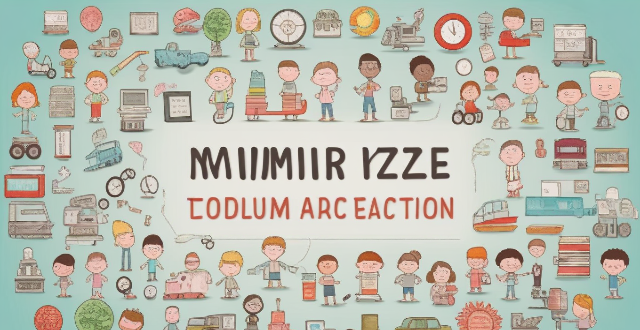
What challenges do young people face when trying to participate in climate action ?
The text summarizes the challenges faced by young people in climate action. These include a lack of awareness and education, limited resources and opportunities, social and political barriers, emotional and psychological challenges, and practical difficulties. Despite these obstacles, it is crucial for young individuals to engage in climate action to create positive changes and contribute to a more sustainable future.

How do people's attitudes towards climate change affect their willingness to take action on environmental issues ?
The text discusses how attitudes towards climate change influence environmental action. It identifies factors like awareness, emotional connection, responsibility, barriers, and incentives that shape willingness to act on environmental issues.

How can businesses be encouraged to take climate action ?
Climate change is a global challenge that requires collective action from businesses. Government regulations and incentives, public pressure, long-term financial benefits, collaboration with other businesses, and education and awareness campaigns are some ways to encourage businesses to take climate action. By taking action, businesses can reduce their environmental impact, save money on utility bills and disposal costs, and benefit from stable sources of renewable energy.

How can we ensure that climate action benefits both men and women equally ?
Ensuring gender equality in climate action is crucial for addressing the differential impacts of climate change on men and women. To achieve this, we must recognize gender-specific impacts, encourage gender equality in policy making, integrate gender perspectives in adaptation and mitigation measures, enhance access to resources and services, support capacity building and empowerment, address cultural and social norms, and monitor progress to adjust strategies accordingly. By doing so, we can promote a more equitable future where climate action benefits both genders equally.

How can social media be used to mobilize young people for climate action ?
The text discusses how social media can be utilized to engage and mobilize young people for climate action. It outlines strategies for raising awareness, fostering dialogue, and driving concrete actions through educational content, influencer partnerships, hashtag campaigns, discussion forums, interactive polls and surveys, user-generated content, volunteer opportunities, online activism, and practical tips for sustainable living. The conclusion emphasizes the potential of social media as a tool for social change and calls for its wise use to shape a brighter future.
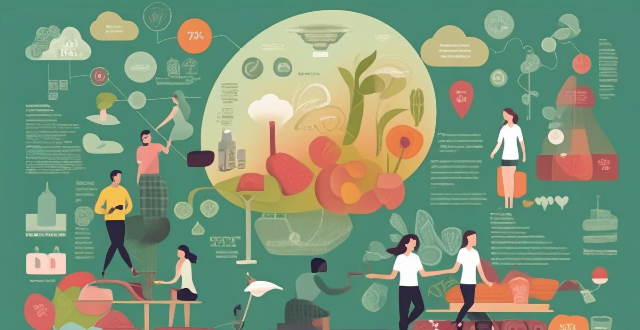
What is the relationship between climate action and sustainable development ?
Climate action and sustainable development are interconnected concepts that aim to create a healthier, more equitable, and prosperous world. They have mutual benefits, as taking action to address climate change can also promote sustainable development. An integrated approach that combines both concepts can lead to better outcomes, considering environmental, social, and economic aspects. Both require a long-term perspective, planning for the future while addressing immediate needs. Recognizing the importance of both concepts and working towards their integration is essential to create a more resilient and adaptable society.

How can we promote sustainable consumption ?
Sustainable consumption is a key factor in achieving a sustainable future. It involves making conscious choices about the products we buy, the resources we use, and the impact we have on the environment. Here are some ways to promote sustainable consumption: 1. Education and Awareness: Raise awareness about the importance of sustainable consumption; provide information on sustainable products and services; encourage responsible consumption habits. 2. Government Policies and Incentives: Implement policies that support sustainable consumption; offer incentives for sustainable practices; encourage circular economy principles. 3. Corporate Responsibility and Innovation: Encourage corporate responsibility; foster innovation in sustainable products and services; collaborate with stakeholders. 4. Community Action and Collaboration: Organize community events; create networks of sustainable businesses; engage with schools and youth organizations. By taking these actions at individual, community, business, and government levels, we can collectively move toward a more sustainable future where our consumption patterns support rather than harm the planet.
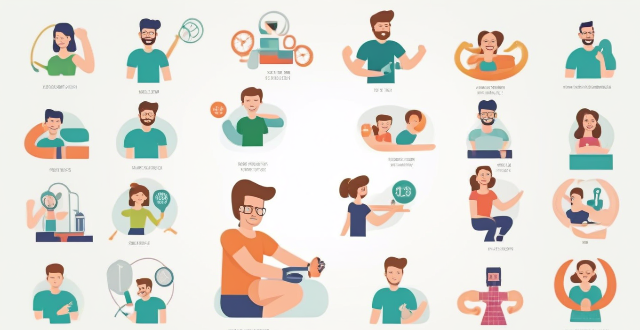
What impact does sports culture have on youth development ?
The article discusses the impact of sports culture on youth development, highlighting its benefits in physical health, mental well-being, social skills, and emotional growth. Participating in sports activities helps young people improve their fitness levels, motor skills, self-esteem, stress management, teamwork, leadership skills, cultural exchange, resilience, goal setting, and achievement. Encouraging young people to participate in sports can help them become well-rounded individuals who are better prepared for adulthood.

What is the impact of climate action on biodiversity and ecosystems ?
Climate action has both positive and negative impacts on biodiversity and ecosystems. Positive effects include reduction in greenhouse gas emissions, increased awareness and education, protection of key habitats, promotion of sustainable practices, and restoration of degraded ecosystems. Negative effects include displacement of local communities, habitat loss and fragmentation, ecosystem disruption, resource competition, and uncertain long-term outcomes. To maximize the benefits of climate action for biodiversity and ecosystems, an integrated approach that considers both environmental and social factors is crucial.

What challenges do filmmakers face when creating realistic sports action scenes ?
Creating realistic sports action scenes in films is a challenging task for filmmakers. They need to capture the essence of the sport while maintaining authenticity and excitement for viewers. The challenges they face include achieving accurate representation, capturing high-energy action, maintaining audience interest, enhancing visual effects, and adapting to different sports genres. By successfully overcoming these obstacles, filmmakers can deliver captivating sequences that capture the spirit of sports and leave audiences on the edge of their seats.

How can young people balance their education and involvement in climate action ?
Balancing education and involvement in climate action is crucial for young people. Effective strategies include time management, goal setting, and seeking support from peers and mentors. By prioritizing tasks, breaking down goals into smaller steps, and celebrating milestones, young people can achieve a balance between their education and involvement in climate action initiatives. Joining a community of like-minded individuals, finding a mentor, and collaborating with peers can also provide valuable support and opportunities for growth. With these strategies, young people can make a positive impact on the environment while achieving their educational goals.

How can we involve vulnerable communities in climate action planning and implementation ?
Involving vulnerable communities in climate action planning and implementation is crucial for creating effective, equitable, and sustainable solutions to the climate crisis. Here's how we can ensure their involvement: 1. Identify and engage with vulnerable communities through community meetings, workshops, and consultations. 2. Build trust and capacity within these communities by involving them in decision-making processes, providing regular updates on progress, demonstrating transparency and accountability, and offering training programs on climate change science, policy advocacy, and project management skills. 3. Collaborate with vulnerable communities to develop solutions that address their specific needs and priorities while being culturally sensitive and respectful of local traditions and practices. 4. Regularly monitor progress towards climate action goals and evaluate the impact of initiatives on vulnerable communities by collecting data on changes in environmental conditions, economic opportunities, and social wellbeing, as well as seeking feedback from community members.
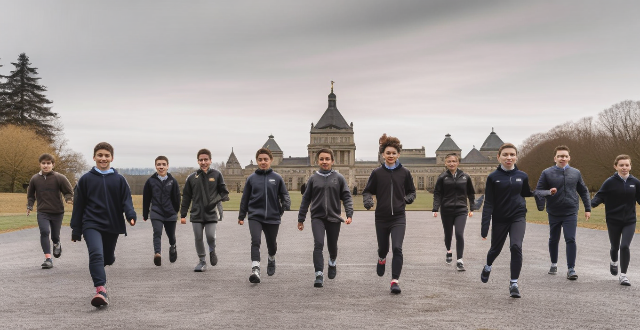
How do sports exchange programs contribute to cultural awareness and appreciation among youth ?
Sports exchange programs offer young athletes a platform to engage in cultural exchanges and foster cultural awareness and appreciation. These programs expose youth to different cultures, promote language learning, and include cultural exchange activities that break down cultural barriers. Additionally, sports exchange programs celebrate diversity, build lasting friendships, and encourage the embrace of cultural differences, contributing to a more harmonious global community.